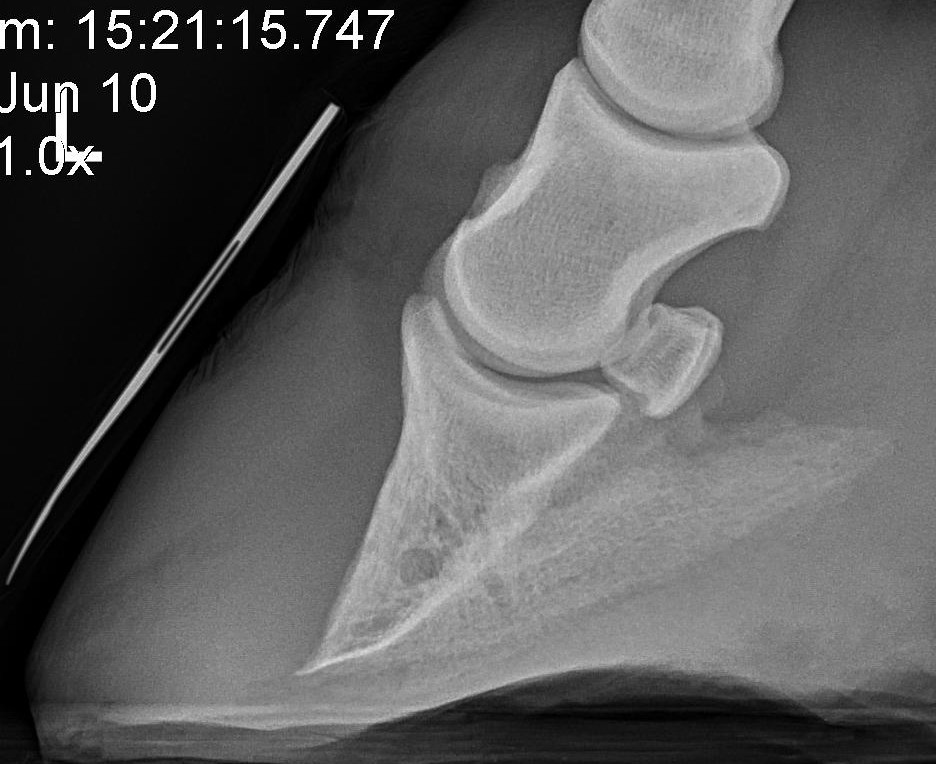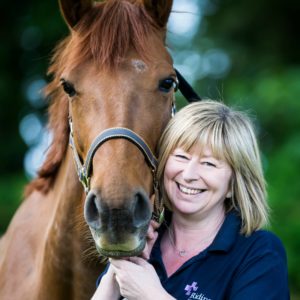Why I recommend every laminitic horse has X-rays
2019 has been a very bad year for laminitis, there has hardly been a day go by where one of the team hasn’t been diagnosing and treating at least one case, some weeks many more.
I have always strongly advocated taking radiographs of the feet of horses suspected of or diagnosed with laminitis, the sooner in the disease process the better. Here are my reasons why:
- Radiographs are the only way to accurately see what is going on within the hoof capsule of a laminitic foot. Examinations and palpation can be useful but only radiographs will tell the full story. The main things we need to assess is rotation of the pedal bone away from the hoof wall and sinking of the pedal bone within the hoof capsule.
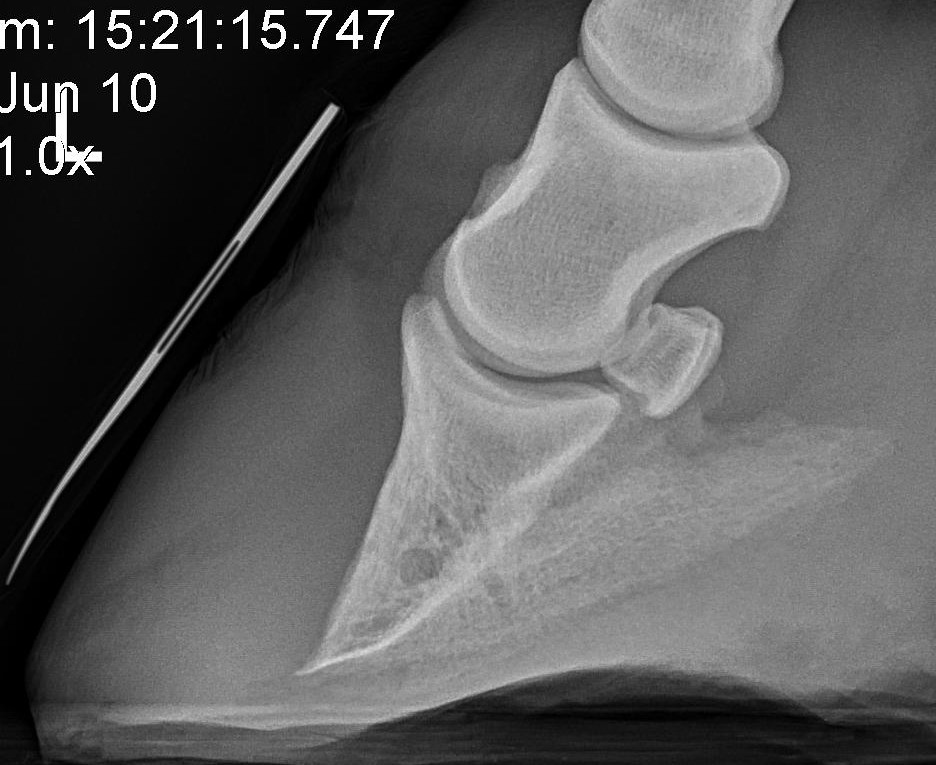
- Radiographs give us more knowledge, and that allows us to create a specific treatment plan for the horse and also each individual foot. For example, a horse with a very thin sole will require more sole support than a horse with a thick sole, a horse showing signs of pedal bone rotation requires immediate help to support the pedal bone and prevent further rotation.
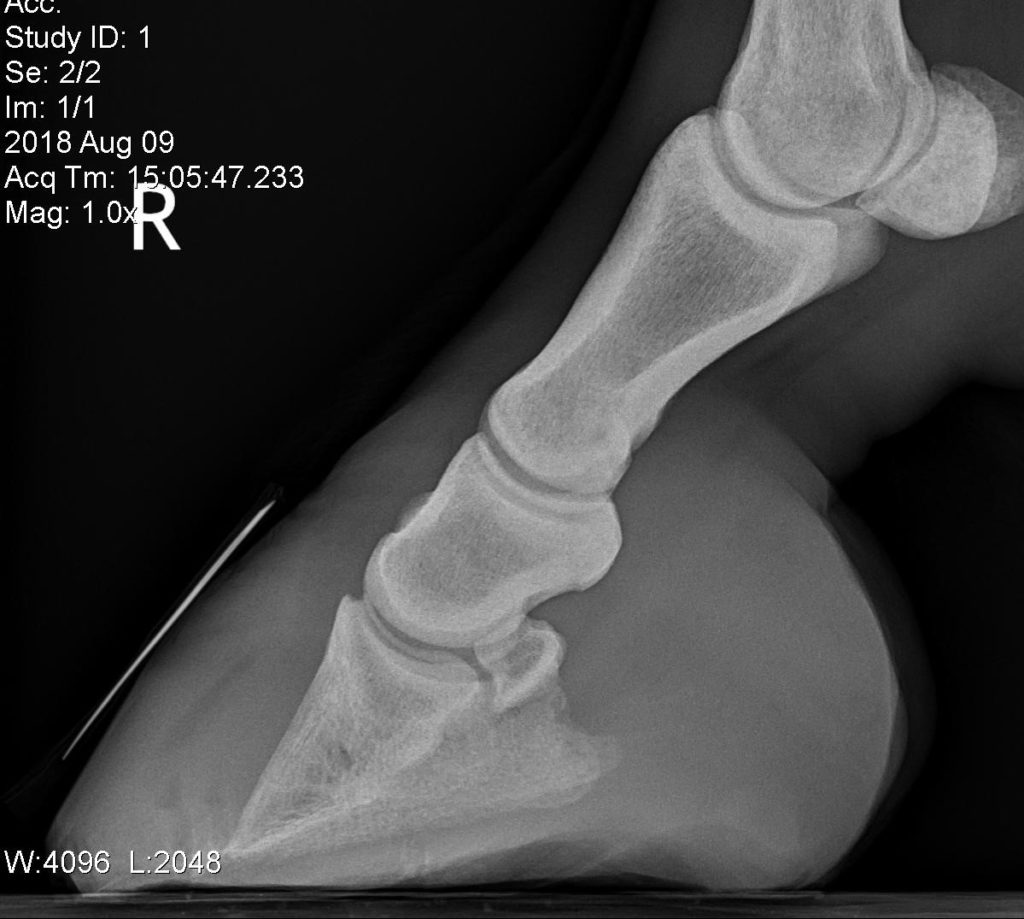
- Remedial farriery will be more effective if based off radiographs. One of the keys to managing laminitis is remedial farriery, whether that be trimming or shoeing there are a variety of different ways the hoof can be helped. One important factor is making sure the toes are kept short to reduce pressure on the laminae. Understandably farriers will be reluctant to take toes back without knowing exactly where the bone is. Another common problem we see with laminitis is gas shadows – this is where gas is trapped between the hoof wall and the pedal bone and can be incredibly painful. If diagnosed on radiographs the hoof wall can be either rasped or dremmelled to relieve pressure and offer almost instant improvement in comfort levels. The fitting of heart bar shoes can be vitally important in cases of pedal bone rotation, but their placement needs to be highly accurate to offer the right amount of support. Without radiographs it is impossible to know the correct way to fit heart bar shoes.
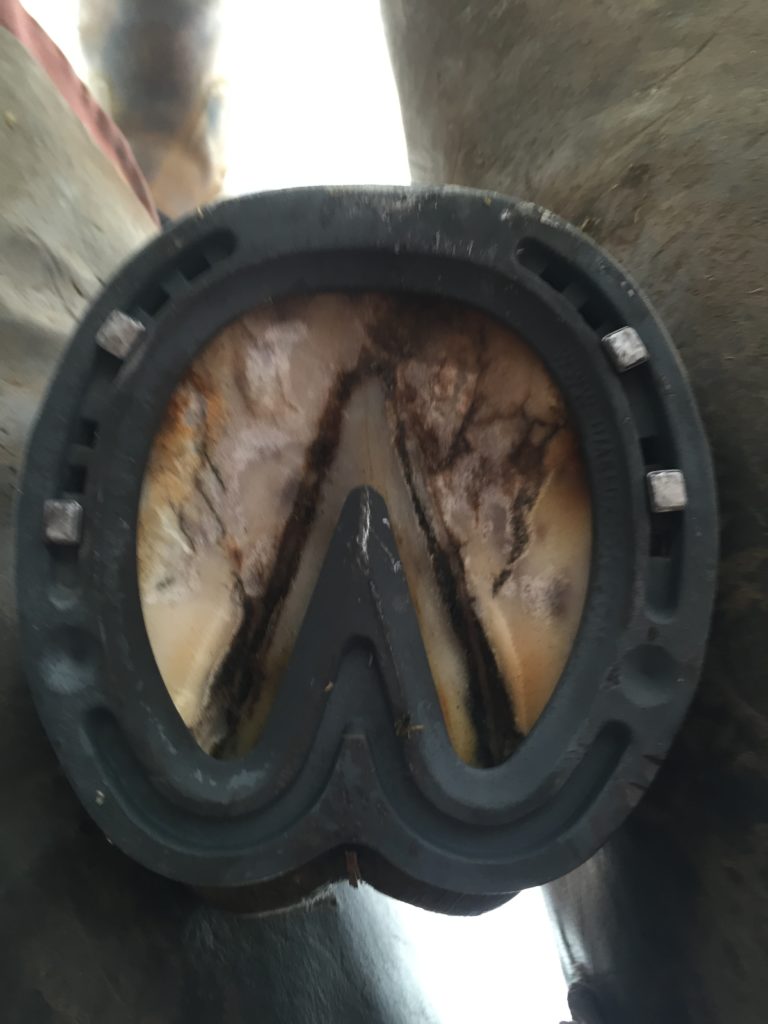
- Radiographs can help us guide owners on the likely prognosis of the disease and likelihood of the horse or pony being able to return to work. There are several factors that have been shown to influence the outcome of a laminitis case including the severity of the laminitis, breed and weight of horse or pony, the amount of sinking (founder distance) and amount of rotation. While no one factor can accurately predict outcome, radiographs are a very useful guide and in very severe cases may save a horse from unnecessary suffering.
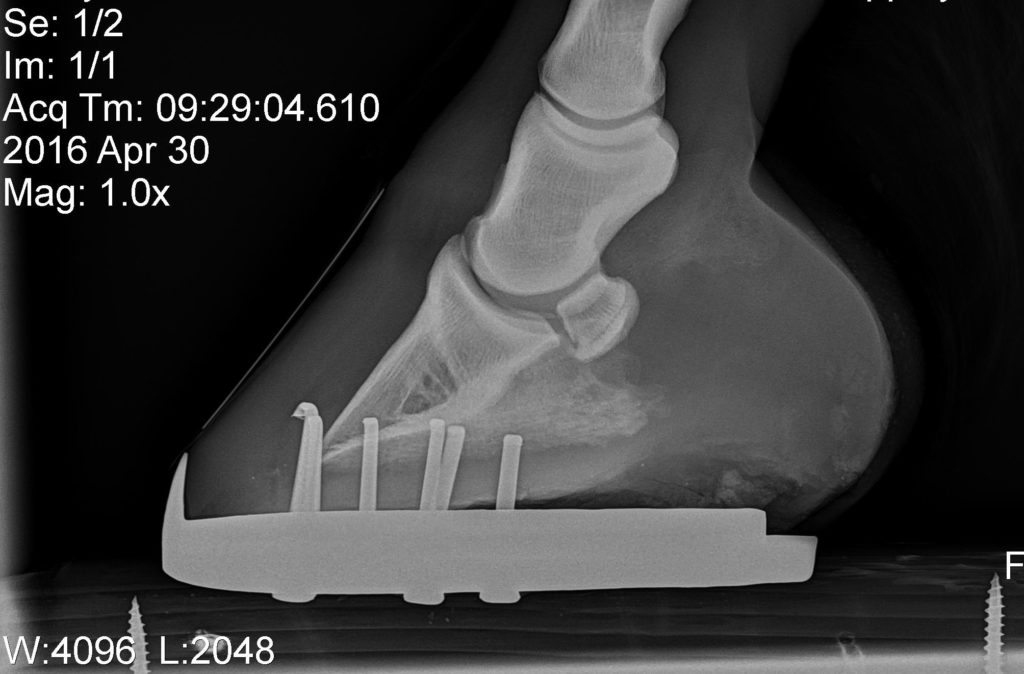
- By taking radiographs at different points in the disease we are able to monitor how the disease is progressing and whether the treatment and management has been effective. For example, if a horse that has 5 degrees rotation of the pedal bone on day 1, then 4 weeks later follow up radiographs reveal 10 degrees of rotation, we know that we need to make some immediate changes to try to prevent further deterioration. It also allows us to guide owners when the horse can be brought back into work.
To try to encourage more owners of horses and ponies with laminitis to have their feet radiographed Ridings Equine Vets are offering laminitic X-rays for a heavily discounted price of £150* throughout July and August. Please contact the practice to book an appointment on 07747771182.
* Price excludes visit and sedation if required
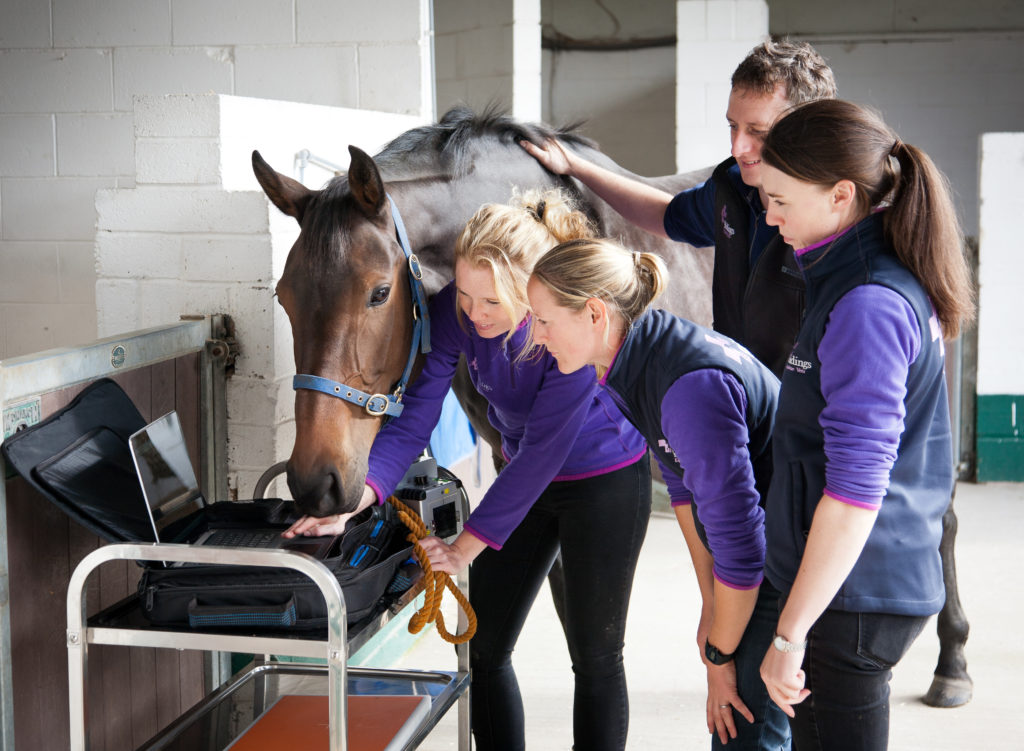
Jenny xxx
